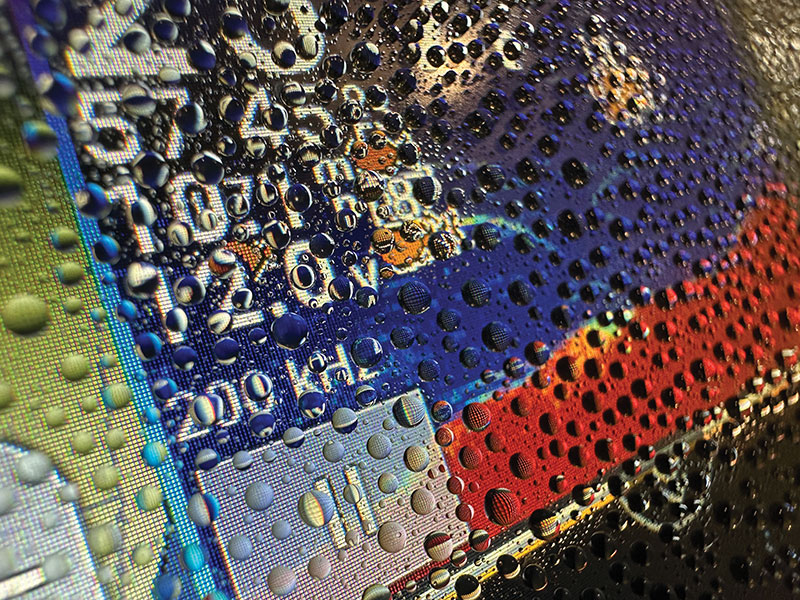
Understanding the waterproof rating on marine electronics.
by Glenn Hayes
Whether you’re in the market for tech equipment or are looking into the latest gizmo for your boat, one thing to confirm is that it’s at least some degree waterproof. But what is waterproof? What is water resistant? Can it handle a splash, light rain or an accidental dunking?
Fortunately, a standardized rating system is used to clue you in on how your new gadget or equipment will hold up to the elements while boating. Chances are you have heard these ratings before, such as IPX6 or IPX8, but do you know what they mean?
Read on to get a better understanding of how to prevent water-damaged equipment.
The IP Code
A standard known as the IP Code, the Ingress Protection Rating, or the International Protection Rating, was created by the International Electro- technical Commission so that end users could quantify and reference how well mechanical casings and enclosures are sealed against dust, moisture and accidental contact. Until this standard was created, “waterproof” and “watertight” were just marketing terms that could not be easily defined.
The code is represented by letters and numbers, each representing different information. In the marine world, after the IP, the following letter is usually X. This, if tested, would typically represent a number on a scale to indicate the resistance to dust intrusion. Because that is not usually a requirement in the marine world, it is generally defined with the X. The following number is essential in determining waterproofness, scaled from 0-9, with nine being the most waterproof.
- IPX0: No protection
- IPX1: Protected against condensation or dripping water
- IPX2: Protected against spraying water when tilted slightly from its normal position
- IPX3: The same as previously listed but tilted at more of an angle
- IPX4: Protected against splashing water from any angle
- IPX5: Protected against a low-pressure water stream from any angle
- IPX6: Protected against a high-pressure stream from any angle
- IPX7: Protected against water immersion for 30 minutes at a depth of 1 meter
- IPX8: Protected from water immersion for longer times
- IPX9: Protection against close-range high pressure and high-temperature spray downs for prolonged periods
Sealing electronics
The good news is that many of today’s high-quality marine electronics from key manufacturers are usually IPX6-rated or higher. Most multifunction displays and many of the peripherals that connect to them are designed not to allow water ingress under typical boating and marine situations.
For many products, this is accomplished with precision-manufactured casings, excellent seals and dry nitrogen sealing. This sealing purges the air out of the units and replaces it with nitrogen gas, eliminating condensation and other moisture issues. This is also one of the reasons any repairs must be done at the manufacturer, as standard bench techs don’t usually have this capability once a repair is completed.
Of course, even with a good waterproof rating, one should avoid soaking any of your equipment as time, changes in temperature and exposure to the elements can harm those seals. That rating, after all, was done with a brand-new unit that hadn’t been sitting out in the harsh marine environment.
It would be safe to say that most electronics failures are due (at least in part) to failed connections. While the bilge is a common area for water-damaged equipment, behind the console or dash is also where water intrusion often rears its ugly head. While most boaters need not worry about the front of their displays, it is essential to ensure they are sealed where mounted and water cannot find its way behind them to the bevy of wires and connectors that link them all together. Most manufacturers provide seals for their displays if flush mounted. If those aren’t available, silicone should be used along with watertight fittings for cables that must pass through a dash or bulkhead. Liberal amounts of lithium grease on connections and heat-shrinking terminals and connections will ensure water is less of an issue.
So, the next time you purchase any tech equipment for your boat, look at the waterproof rating. It will be a good indication of how well it will hold up to the marine environment. And if it isn’t rated, chances are you may end up with a wet mess.





